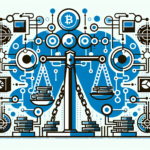Understanding Artificial Intelligence
What is Artificial Intelligence?
Artificial Intelligence, commonly known as AI, refers to the simulation of human intelligence in machines. These machines are programmed to think and learn like humans, enabling them to perform tasks that typically require human intelligence. From understanding natural language to recognizing patterns, AI can tackle a variety of complex problems.
Types of AI
AI can be broadly categorized into two types:
Narrow AI
Narrow AI is designed for specific tasks. This includes applications like virtual personal assistants, recommendation systems, and image recognition software. These systems excel at tasks they are programmed for but lack the ability to perform outside of those parameters.
General AI
General AI, unlike its narrow counterpart, is theoretical and aims to replicate human cognitive abilities. This type of AI has not yet been achieved, and researchers are still exploring how to create machines that can understand, learn, and apply knowledge in a generalized way.
Applications of AI
AI is used across various industries, transforming operations and improving efficiency.
Healthcare
In healthcare, AI aids in diagnostics, treatment planning, and personalized medicine. For example, machine learning algorithms can analyze medical images more rapidly and accurately than human practitioners.
Finance
In the finance sector, AI is utilized to detect fraudulent activities, assess risks, and make trading decisions. By analyzing vast amounts of data in real-time, AI can help professionals make informed choices quickly.
Retail
Retailers employ AI to enhance customer experiences through personalized recommendations and inventory management. AI-driven chatbots also improve customer service, providing immediate responses to inquiries.
The Internet of Things (IoT)
What is IoT?
The Internet of Things, or IoT, refers to the network of interconnected devices that communicate and share data with each other via the internet. Everyday objects, from home appliances to industrial machines, can be embedded with sensors and software, allowing them to collect and exchange data.
How IoT Works
IoT devices are equipped with sensors that gather information from their environment. This data is then sent to cloud-based platforms for storage and analysis. By processing this data, organizations can gain insights, automate processes, and improve decision-making.
Applications of IoT
IoT technology is revolutionizing several industries:
Smart Homes
In smart homes, IoT devices enable automation and enhanced efficiency. From smart thermostats adjusting to your preferences to security cameras monitoring your property, IoT is all about convenience and control.
Healthcare
In the healthcare sector, IoT devices can monitor patients’ vital signs in real-time, alerting healthcare providers in case of emergencies. Remote monitoring systems help doctors keep track of patients’ health, improving outcomes and reducing hospital visits.
Industrial IoT
Industrial IoT (IIoT) revolutionizes manufacturing and production processes. Sensors on machinery can predict failures, enabling preventive maintenance and minimizing downtime. This leads to increased efficiencies and cost savings.
Blockchain Technology
What is Blockchain?
Blockchain is a decentralized digital ledger that records transactions across many computers securely. The unique feature of blockchain is that it ensures the data cannot be altered retroactively, making it highly secure and transparent.
How Blockchain Works
Each transaction is grouped into a block that is linked to the previous block, forming a chain. Once a block is filled with transactions, it is added to the existing chain. This process requires consensus from multiple parties, ensuring that all participants agree on the validity of the transaction.
Applications of Blockchain
Blockchain technology has numerous applications beyond cryptocurrency:
Financial Services
In finance, blockchain enables secure and transparent transactions, reducing fraud and lowering transaction costs. Many banks are now exploring blockchain to streamline cross-border payments.
Supply Chain Management
In supply chains, blockchain improves traceability and transparency. By tracking products from origin to destination, companies can ensure authenticity and improve trust among stakeholders.
Healthcare
In healthcare, blockchain secures and shares patient records, ensuring that only authorized personnel have access. This enhances patient privacy and streamlines data sharing among healthcare providers.
Augmented Reality (AR) and Virtual Reality (VR)
What are AR and VR?
Augmented Reality (AR) and Virtual Reality (VR) are immersive technologies that alter a person’s perception of the world. While AR overlays digital information onto the real world, VR creates a completely immersive digital environment.
How AR and VR Work
AR uses devices like smartphones or smart glasses to project digital images in real-time, enhancing your view of the real world. VR, on the other hand, typically requires a headset that immerses users in fully simulated environments.
Applications of AR and VR
These technologies have a wide range of applications:
Gaming
In gaming, both AR and VR offer innovative experiences. Players can interact with their surroundings in new ways, resulting in higher engagement levels.
Education
In education, AR and VR enhance learning experiences by providing immersive simulations. Students can explore historical events or complex scientific concepts through virtual field trips or hands-on activities.
Industry Training
In industries like aviation or healthcare, VR is used for training simulations where real-world consequences can be costly or dangerous. Trainees can gain hands-on experience without the risks associated with actual tasks.
5G Technology
What is 5G?
5G is the fifth generation of mobile network technology, promising faster speeds, lower latency, and greater connectivity than its predecessors. This advancement is set to revolutionize how we access and interact with data.
How 5G Works
5G technology relies on an intricate network of small cells, high-bandwidth frequencies, and advanced antennas. This allows for a more extensive network coverage and faster data transmission rates.
Applications of 5G
5G is anticipated to impact various sectors significantly:
Smart Cities
In smart cities, 5G enables improved traffic management, public safety, and efficient energy usage. The high-speed connectivity allows for real-time data analysis and decision-making.
Telemedicine
In the healthcare field, 5G facilitates real-time telemedicine services, allowing doctors to provide high-quality care remotely without delays due to bandwidth issues.
Autonomous Vehicles
5G technology is essential for the development of autonomous vehicles. The low latency and high-speed data transfer provide the necessary infrastructure for vehicles to communicate with each other and traffic signals in real time.
Overall, as we continue to embrace these technologies, their impact on society and various industries will only deepen, shaping the future of how we live and work.








